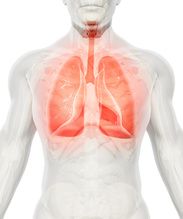Article
FF/UMEC/VI Versus FF/VI and UMEC/VI: Treatment Effects in COPD
Author(s):
Data from a subgroup analysis of the IMPACT study, which compared inhale triple therapy FF/UMEC/VI to dual therapy FF/VI and UMEC/VI for the treatment of COPD, has been released.

Data from a subgroup analysis of the IMPACT study, which compared inhale triple therapy FF/UMEC/VI to dual therapy FF/VI and UMEC/VI for the treatment of chronic obstructive pulmonary disease (COPD), were presented at the 2018 CHEST Annual Meeting in San Antonio, TX.
Among the results, significant improvements in the rate and risk of a moderate/severe and severe exacerbation, lung function, and health status with FF/UMEC/VI treatment compared to UMEC/VI were observed. However, a consistent benefit of FF/UMEC/VI over FF/VI was only noted in patients with more severe airflow limitation, with the exception of lung function.
The subgroup analysis consisted of a post hoc analysis of the phase 3 IMPACT trial, which consisted of a randomized, double-blind, parallel-group, multicenter study that investigated the effects of a once-daily single-inhaler triple therapy containing 100/62.5/25 mcg of FF/UMEC/VI administered once-daily or a dual therapy containing either 62.5/25 mcg of UMEC/VI or 100/25 mcg of FF/VI.
The therapies were administered over 52 weeks in symptomatic patients (COPD Assessment Test [CAT] score ≥10) with ≥1 moderate/severe exacerbation in the previous year on the rate of moderate/severe exacerbations.
Of the 10,355 patients were enrolled, 4151 were given FF/UMEC/VI; 4134 were given FF/VI; and 2070 were given UMEC/VI.
Upon analysis, investigators observed a significant reduction in the rate and risk of moderate/severe exacerbations and the rate of severe exacerbations with FF/UMEC/VI compared to FF/VI in the FEV1 <50% predicted subgroup.
Also in the FEV1 <50% predicted subgroup, a trend towards a reduction in the risk of severe exacerbation (by 12%) was observed. This observance was not statistically significant.
No statistically significant differences were observed in the rate and risk of moderate/severe or severe exacerbations between FF/UMEC/VI and FF/VI in the FEV1 ≥50% predicted subgroup.
In both airflow limitation subgroups, a significant reduction in the rate and risk of moderate/severe and severe exacerbations with FF/UMEC/VI treatment was noted compared to UMEC/VI.
In the FEV1 <50% and ≥50% predicted subgroups at 52 weeks, the improvement in trough FEV1 with FF/UMEC/VI versus UMEC/VI was 41 mL and 72 mL, and versus FF/VI was 94 mL and 97 mL; all measures were respective.
In both airflow limitation subgroups, the improvement in SGRQ total score from baseline and proportion of SGRQ responders were also significantly greater with FF/UMEC/VI at 52 weeks compared with UMEC/VI.
In the FEV1 <50% predicted subgroup, the improvement in SGRQ total score from baseline and proportion of SGRQ responders were significantly greater with FF/UMEC/VI versus FF/VI at 52 weeks. While a numerical improvement was also observed in the FEV1 ≥50% predicted subgroup, the observance was not statistically significant.
The safety profile of FF/UMEC/VI was similar to that of FF/VI and UMEC/VI in both airflow limitation subgroups. No new safety signals associated with the use of ICS, LAMA, or LABA
in combination were identified.
From the data, study authors concluded that significant improvements in the rate and risk of a moderate/severe and severe exacerbation, lung function, and health status compared with UMEC/VI correlated with FF/UMEC/VI treatment, regardless of baseline airflow limitation (FEV1 <50% or ≥50% predicted).
Additionally, a consistent benefit of FF/UMEC/VI over FF/VI was only seen in patients with more severe airflow limitation.
One noted exception regarding this point was observed with lung function. FF/UMEC/VI demonstrated significant improvements compared to FF/VI in both baseline airflow limitation subgroups regarding lung function.
Click here to sign up for more MD Magazine content and updates.Related Coverage >>>Montelukast/Levocetirizine Combination Therapy Yields Effective in Phase 3 TrialHow Type 2 Cytokines Burden Severe AsthmaRethinking the Asthma-COPD Overlap as a Continuum of Care





